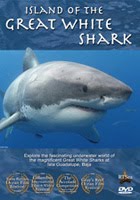 The Oceanic Whitetip shark: a fascinating and elegant shark and, as a pelagic or open water shark, one that does not encounter people often. It has a bad reputation in some corners as it has been implicated in human fatalities following wartime shipwrecks. But, like other species of shark, the oceanic whitetip has paid dearly in the commercial shark fishing trade and it has become one of the rarer of all shark species. By example, its numbers in the Gulf of Mexico have been reported to have declined by as much as 99.3 percent.
The Oceanic Whitetip shark: a fascinating and elegant shark and, as a pelagic or open water shark, one that does not encounter people often. It has a bad reputation in some corners as it has been implicated in human fatalities following wartime shipwrecks. But, like other species of shark, the oceanic whitetip has paid dearly in the commercial shark fishing trade and it has become one of the rarer of all shark species. By example, its numbers in the Gulf of Mexico have been reported to have declined by as much as 99.3 percent.In the Bahamas, the remote Cat Island is reporting a respectable number of oceanic whitetips - given the current population numbers - and this has attracted the attention of several shark diving operators. Patric Douglas of Shark Divers has some interesting suggestions as to how these sharks could be made both a source of tourism and conservation research efforts. Patric is known for calling it as he sees it and, while not currently planning shark diving operations there, he is concerned that the oceanic whitetip site at Cat Island needs to be properly managed to insure it is not carelessly exploited by dive operators or sport fisherman.
Here are his recently posted suggestions:
1. A Bahamas Carcharhinus longimanus [oceanic whitetip] educational website. This site will feature the animals, the site, the conservation status of these animals, and tie in directly to ongoing efforts of PEW and the BNT [Bahamas National Trust]. The site would also feature several pro-shark conservation PSAs; just the sharks, not the divers and the sharks. We're not looking to redefine these animals, or even make a simple point about how safe they may or may not be with divers, that conservation/industry message can be left for another time and place. Under conservation also add research and a non-profit donations page.
 Additionally this should tie into PEW Trusts, and here's why. Conservation efforts need to be funded; real shark conservation sometimes requires a "step back moment" where you have to realize who has the conservation horsepower to get something done or not. After all we're in this for the sharks. If someone can run the ball into the end zone let's get it done. Hanging any conservation effort on the mantle of friends and industry buddies who lack the horsepower does nothing for sharks...but that's another post for another time.
Additionally this should tie into PEW Trusts, and here's why. Conservation efforts need to be funded; real shark conservation sometimes requires a "step back moment" where you have to realize who has the conservation horsepower to get something done or not. After all we're in this for the sharks. If someone can run the ball into the end zone let's get it done. Hanging any conservation effort on the mantle of friends and industry buddies who lack the horsepower does nothing for sharks...but that's another post for another time.2. A Bahamas Carcharhinus longimanus research effort with immediate tagging and tracking of these animals. This effort should be a "Bahamas thing" and there's plenty of folks who can get the job done, they just need funding. In addition operators could charge an extra $100 per diver for the project. Divers will pay for this, gladly, if they believe this benefits the sharks, and it will.
Some of you will start screaming right about now as you wipe off your Epoque D170 Dome Ports, tags on Carcharhinus longimanus? Yes, tags, and here's why. If you want to hedge against sport fishing interests, declaring this site an active shark research site will get the job done. It lends instant credibility to the counter charge that shark divers are just making money from these sharks, and with real data, Bahamian conservation laws put on the books have teeth.
3. Cross-operator/conservation promotion. Every operator servicing divers and Carcharhinus longimanus at Cat Island should have the new conservation website and research efforts on their own sites home pages with a set industry dive protocol agreement. Again a tall order, but we're talking about a brand new shark site with just two or three guys [shark diving operators]. This is not Isla Guadalupe, or even South Africa. As industry members we can look back and see with 100% clarity where non-action will lead us at Cat Island. Is it too much to ask for a round of phone calls, two websites and a conservation tagging program?
I think not, and done right this could be the shining beacon on the hill for future sites worldwide.
Read the entire post on the Shark Divers blog.

















No comments:
Post a Comment